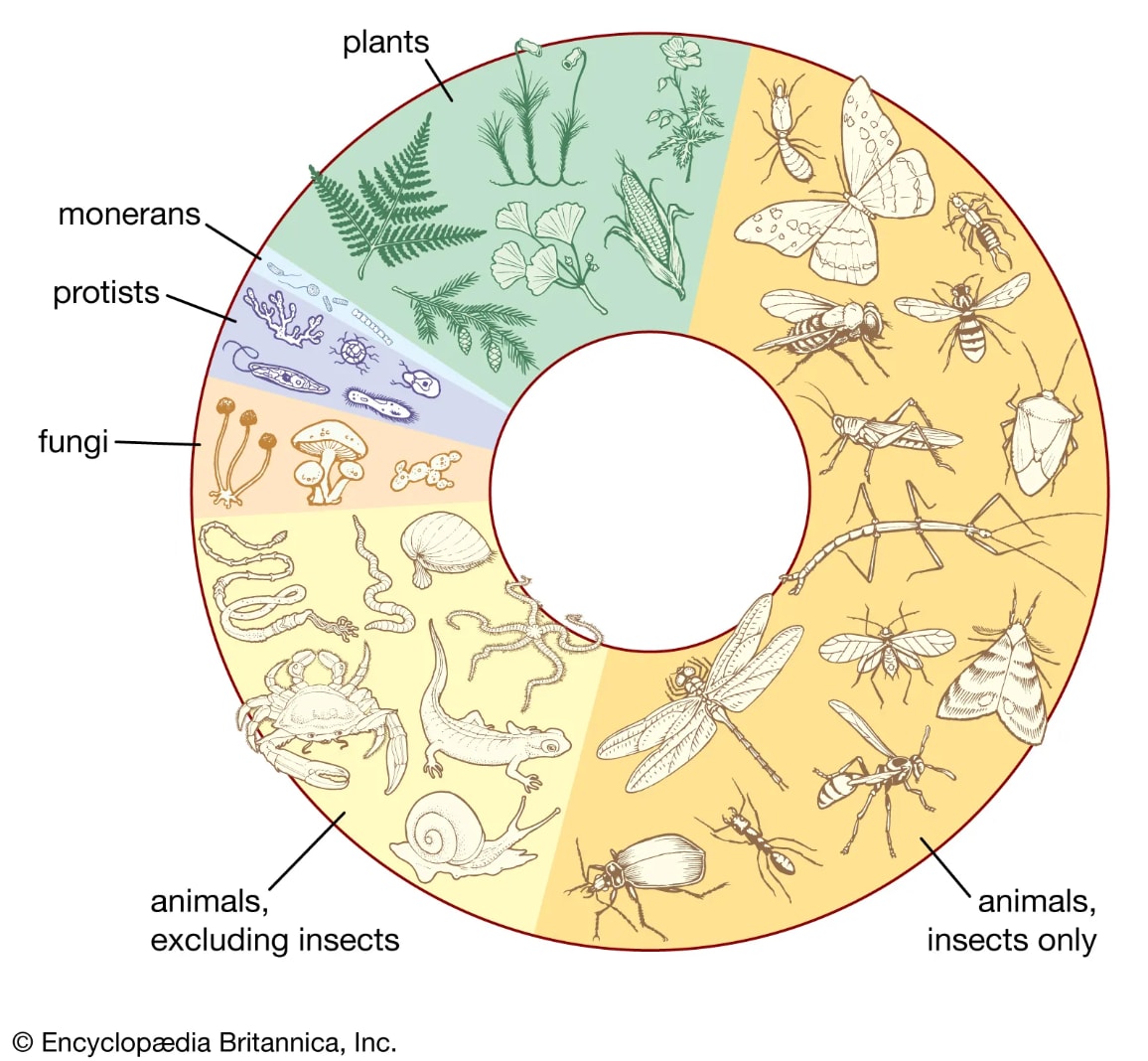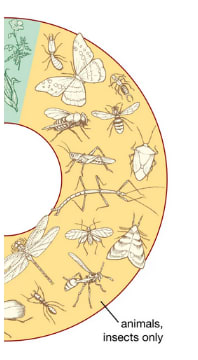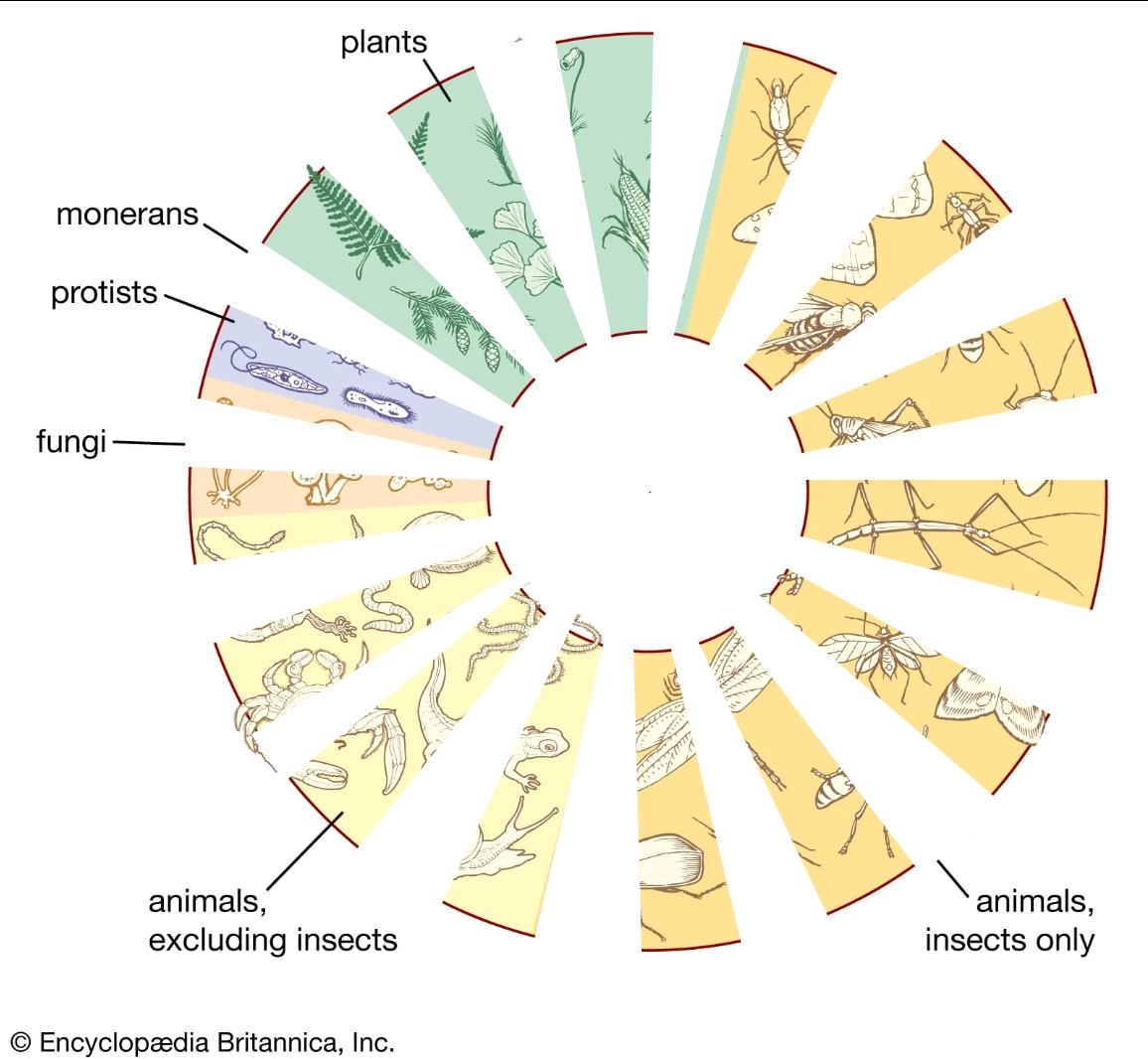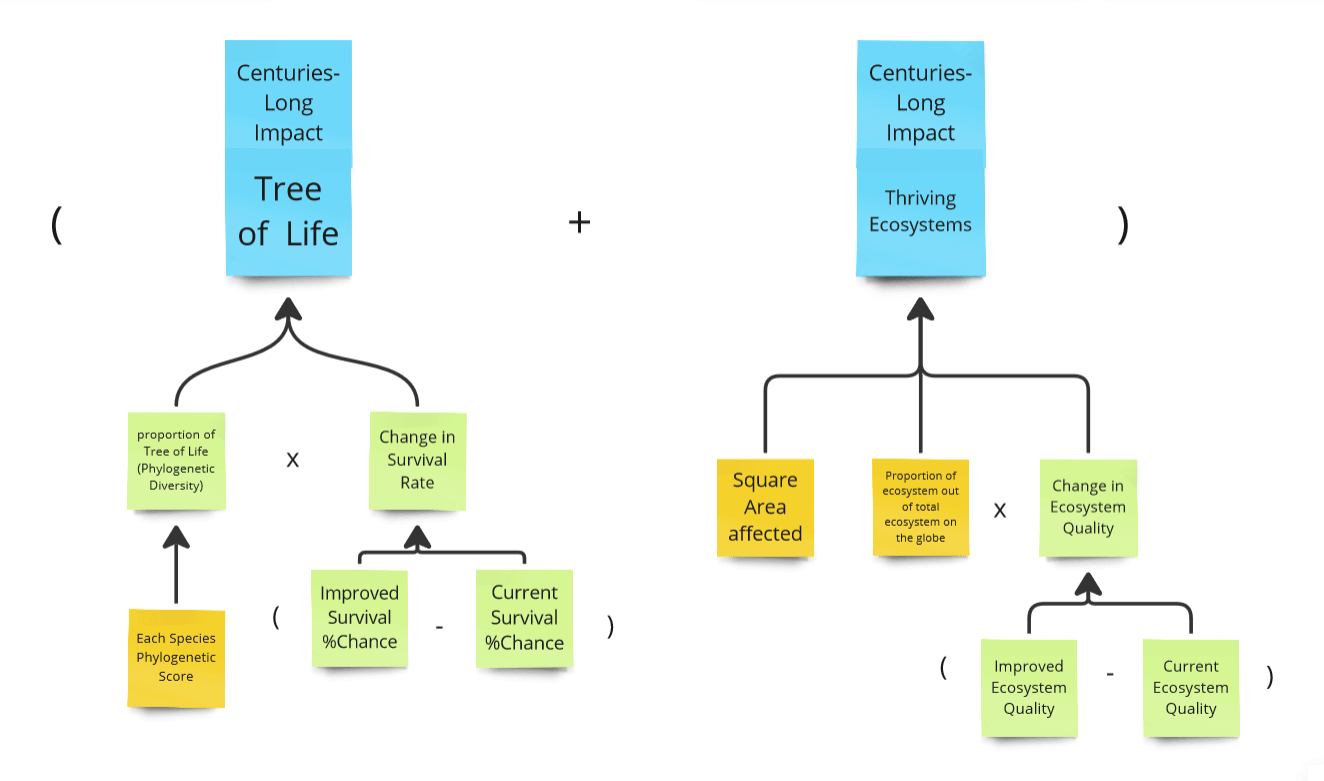Summary
We are EcoResilience Initiative, a 2 year old research group building an effective altruism-based recommendation framework for biodiversity and ecosystems.
- We are currently working on collecting and comparing interventions with longterm impact.
- In a year, we plan to recommend a handful of organisations that effectively promote biodiversity and thriving ecosystems.
We are looking for feedback on our evaluation framework and process. And we invite interested members to join our discussion group.
Explanation of our stance
Our group discusses many environment-related questions, but our research focus is on biodiversity and thriving ecosystems.
We see a gap where conservation could greatly benefit from effective altruist-style problem-solving.
Clearly defining values, being realistic about tradeoffs, and embracing technological solutions would help the environmentalist movement achieve its values. Anecdotally, many environmentalists are frustrated that obstructionism is currently the only game in town.
We also see a gap where EA does not address the concerns of environmentally-minded altruists.
What we are not
- We don’t aim to convince more EA’s to care about biodiversity. If you ALREADY support biodiversity conservation, we want to provide answers on how to do it better.
- We do not claim to be an x-risk cause area.
- We are not about climate change or wild animal welfare. (Climate and WAW are already covered by other EA groups: Giving Green, Effective Environmentalism, Wild Animal Initiative, and many others)
Mainly, we hope to expand EA thinking into conservation biology and environmental science. And, hey, if people get introduced to WAW and x-risk and decide to join up there, that’s great too.
Our previous EA Forum posts:
We wrote about those topics already in previous forum posts, which you can read here:
Our Basic Framework for Impact Evaluation
How We Think about the Importance of Nature
“Nature” holds a lot of value to many people, but it is valued for a diverse collection of conflicting reasons. Lacking solid positive goals is one of the reasons modern environmental efforts are so often obstructionist.
Effective altruism can improve conservation by proactively planning for the more distant future[1] rather than reacting to every new problem in isolation. Most environmentalist efforts are preoccupied by local, near term goals, that tackle individual species and return ecosystems to previous states. “Putting out fires” as a methodology.
We first identified core value-areas, and then selected a subset to prioritize: The Phylogenetic Tree of Life and Ecosystem Resilience over the next few centuries. (You can see an interactive presentation on the many reasons “Why Nature Matters” we created via this link.)
Phylogenetic Tree of Life
We want to prevent species from going extinct, but which species are most important?
Prioritizing by phylogenetics is a method to maximize the proportion of the tree of life that survives. It measures the genetic distance between species (genetic uniqueness). This reflects our inclination for variety and does a better job of conserving traits and ecosystem functions than treating all species as equal.



Ecosystem Resilience
We intend to use complexity as the main indicator of desirable ecosystem states based on the ideas in this paper by James Bullock et al. Rather than returning ecosystems to previous forms, we can aim towards “thriving” characteristics of ecosystems, even if they are novel. This will move the field forward and combat shifting baseline syndrome.
Summary
The formula we’ve been working on measures effectiveness between different interventions according to conserving the Phylogenetic Tree of Life and Ecosystem Resilience over the next few centuries. Each makes up one pillar of the calculation. When combining them, we aim to achieve the most benefit.
Based on these pillars our formula gives us a score of the effectiveness of the intervention. Incorporating tractability and cost effectiveness at the end, we have our final score with which we can recommend organisations based on the good done per dollar spent.

Impact Strategy Evaluation
Our process is: First we will identify which kinds of actions would be most effective, and then we will seek out actors working on these approaches.
- First, we will compile a list of interventions to capture as many intervention “types” or approaches as we can. (this is what we are doing right now)
- Next, we will do a quick-pass comparison for their performance on preserving the Tree of Life and Ecosystem Resilience. (There are many factors we briefly note including: tractability, long-term prospects, funding neglectedness, and certainty.)
- Once we have a list of top candidate interventions, we will do a shallow dive on each.
- With the most promising interventions we will seek out organisations applying these approaches.
- We will then use the evaluation formula to measure the relative impact of specific organisations.
- We will formally recommend which organisations to donate to.
How You Can Help
If you’ve made it this far, thanks for reading!
Thanks to everyone who contributed and gave us feedback on our framework so far.
Reach Out
If this resonates with you please contribute to the conversation on telegram or sign up for our ~1-3 month email updates. Even if not, please still critique our methodology!
If you have any questions, feedback or ideas about our work or approach let us know in the comments, or via email.
If you are interested in funding us, let us know
If you are interested in helping us fund our efforts to promote EA thinking in the biodiversity conservation space let us know! We are a small but dedicated team in its early stages and funding could improve our capacity immensely.
Contribution Possibilities
We are especially looking for people who can help us with…
- Fundraising (including grant applications)
- Community management (e.g. organising meetings, co-working sessions, answering enquiries, moderating the comms channels)
- Research (especially those with training or experience in priorities research, cost-effectiveness analyses; also environmental and data scientists of all stripes)
If you are aware of any organisation doing anything similar let us know!
- ^
Right now our timeframe is between 150 to 500 years forward into the future. Given that biodiversity conservation literature is rare beyond this century, we think this is as far forward as we can reasonably project.

Usually, in EA circles, I find there is too much philosophizing and not enough action. But in this case, I feel like biodiversity/ecoresilience has failed to come up with enough philosophical justification for why biodiversity/ecoresilience matters.
I feel like this is step 1 though. I would feel similar if someone were to recommend DanceVariety Initative, a 2 year old research group building an effective altruism-based recommendation framework for variety in dance styles and the first step wasn't "convince a critical mass of EAs that this is a top priority in the first place".
The EA framework is essentially applying rigor, quantification, measurement, etc. to the world's most pressing problems but there is no reason you can't apply rigor, quantification and measurement to anything (maximizing shareholder value, collecting stamps, getting good at chess, making your NBA team better). What makes it EA is when it is applied to the most pressing problems and I don't think biodiversity/ecoresilience has made a compelling case or put enough effort into it.
Hi,
According to the formula you presented, your impact increases with the area of nature, and it does not depend on wild animal welfare. Consequently, if we end up concluding that wild animals have super net negative lives, maximising your impact would lead to lots of suffering.
I think that’s reasonable that biodiversity loss is unlikely to be an existential risk. However, existential risks could significantly impact biodiversity. Abrupt sunlight reduction scenarios such as nuclear winter could cause extinction of species in the wild, which could potentially be mitigated by keeping the species alive in zoos if there were sufficient food. These catastrophes plus other catastrophes such as those that disrupt infrastructure like extreme pandemic causing people to be too fearful to show up to work in critical industries, could cause desperate people hunting species to extinction. But I think the biggest threat is AGI, which could wipe out all biodiversity. Then again, if AGI goes well, it may be able to resurrect extinct species. So it could be that the most cost-effective way of preserving biodiversity is working on AGI safety.